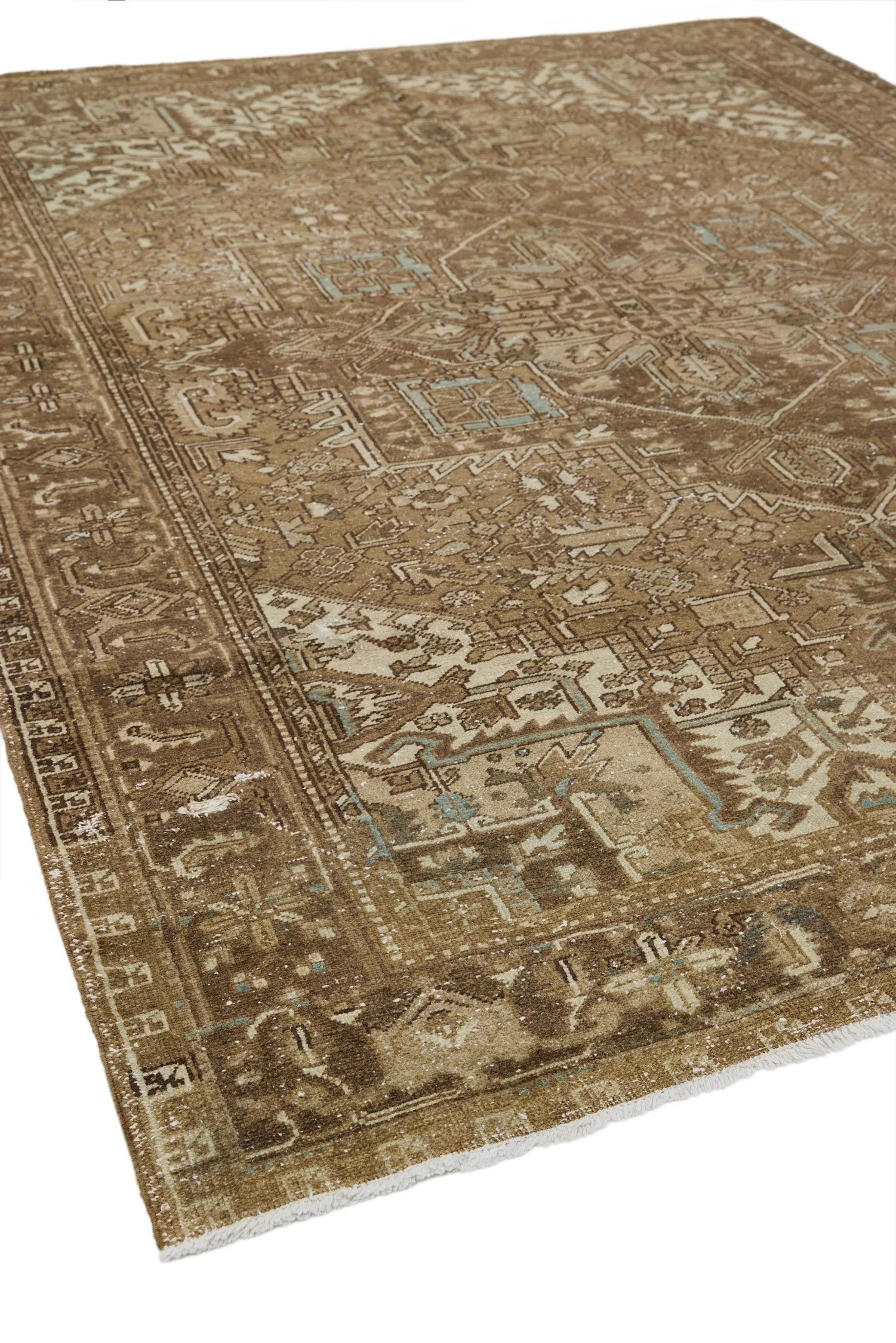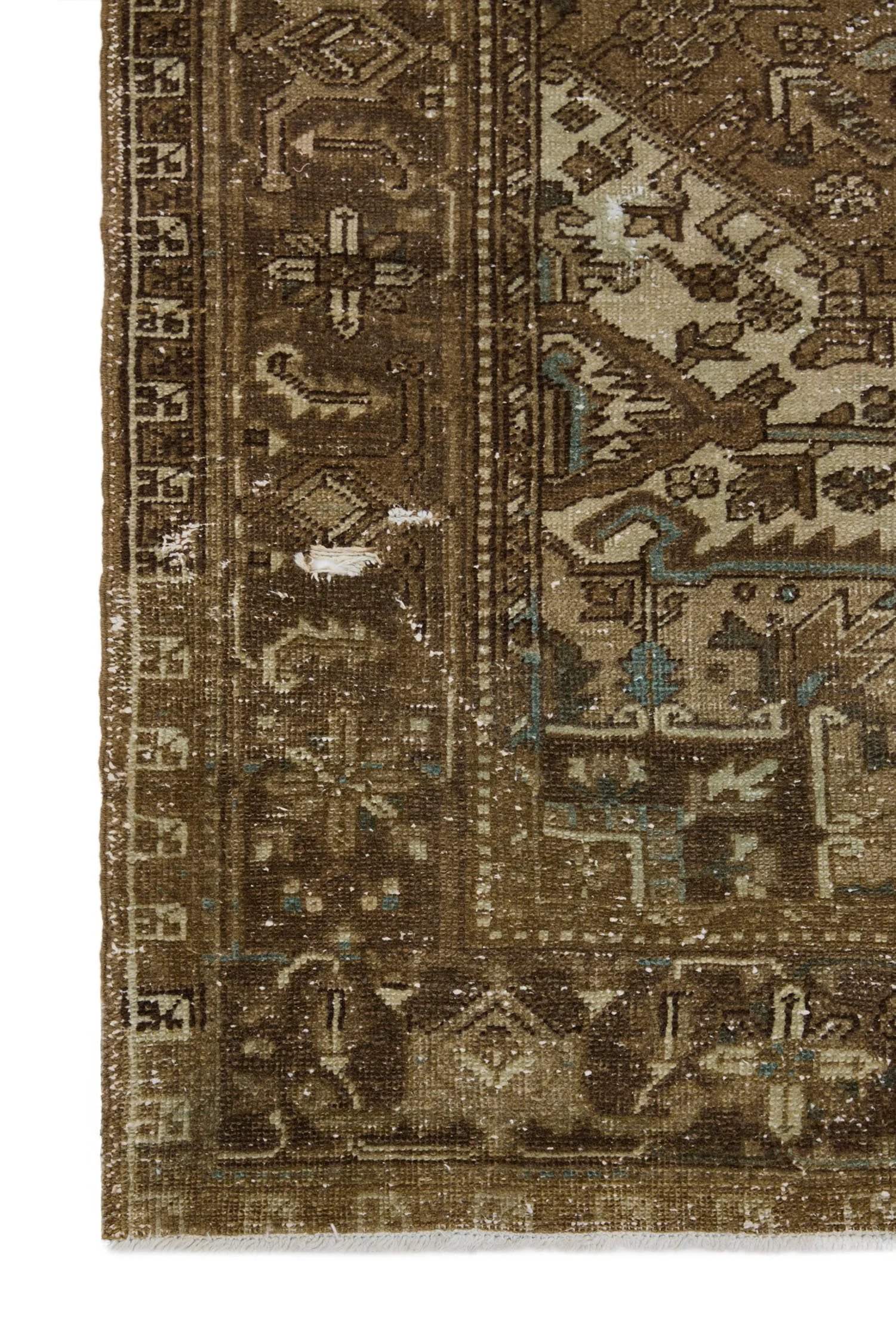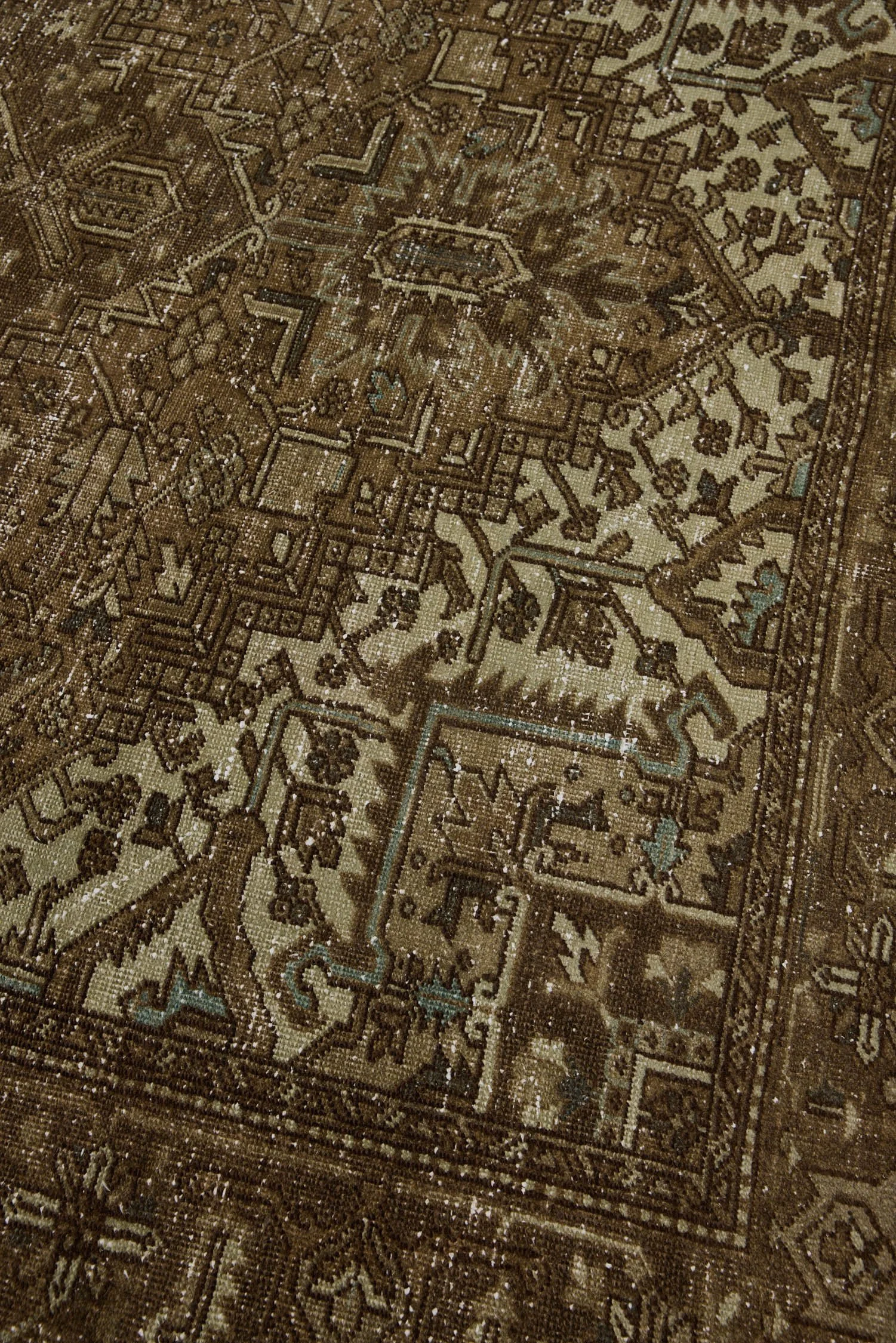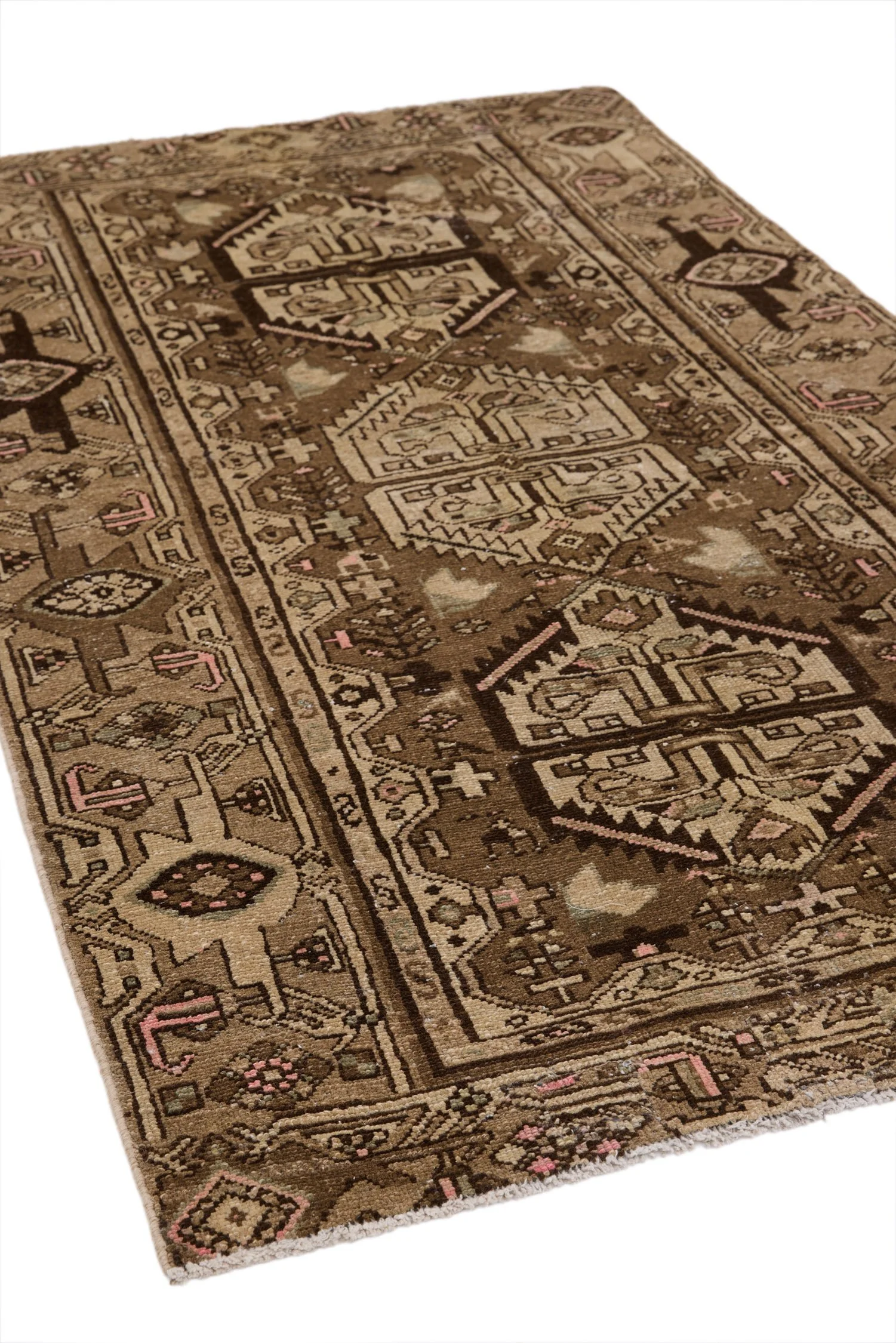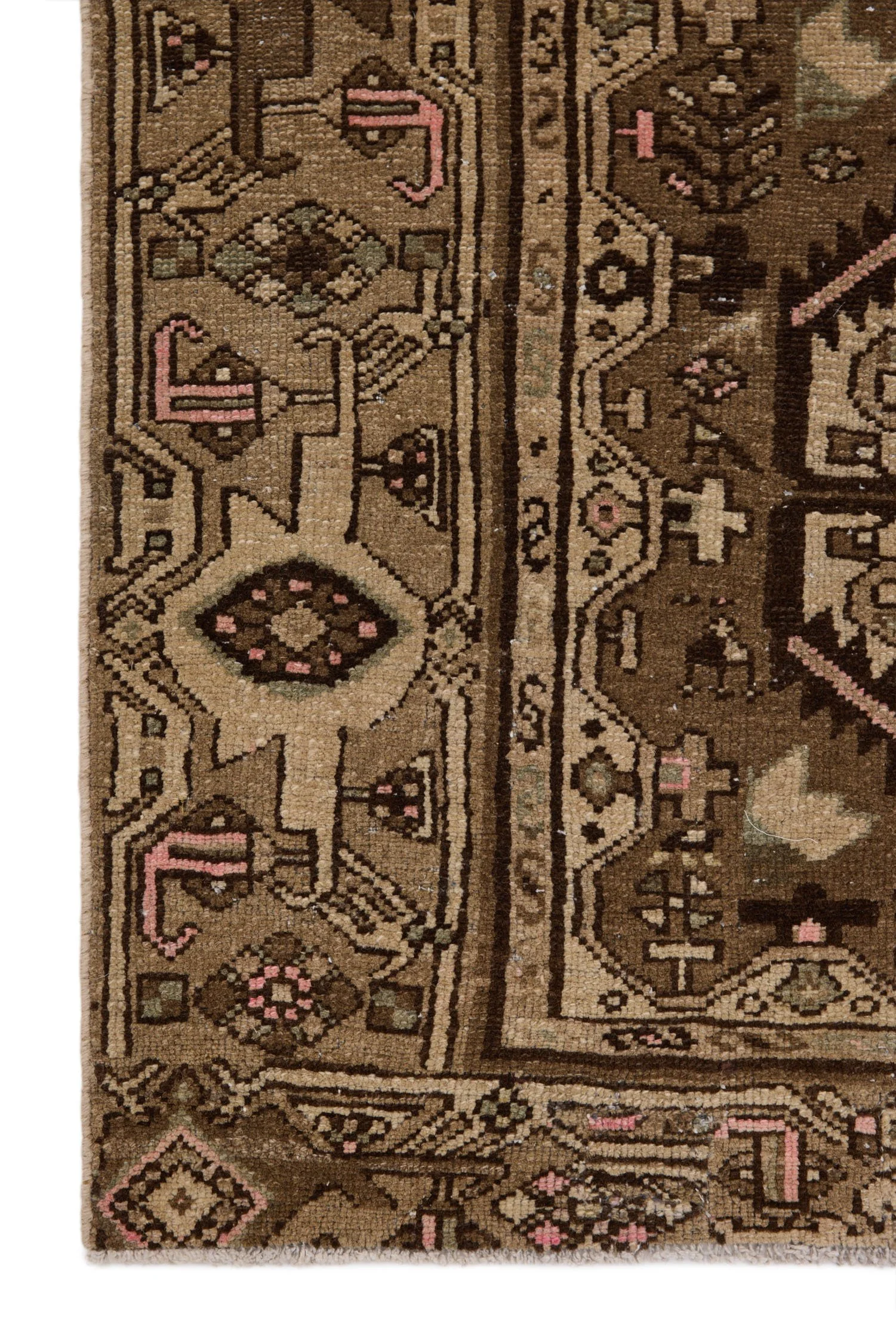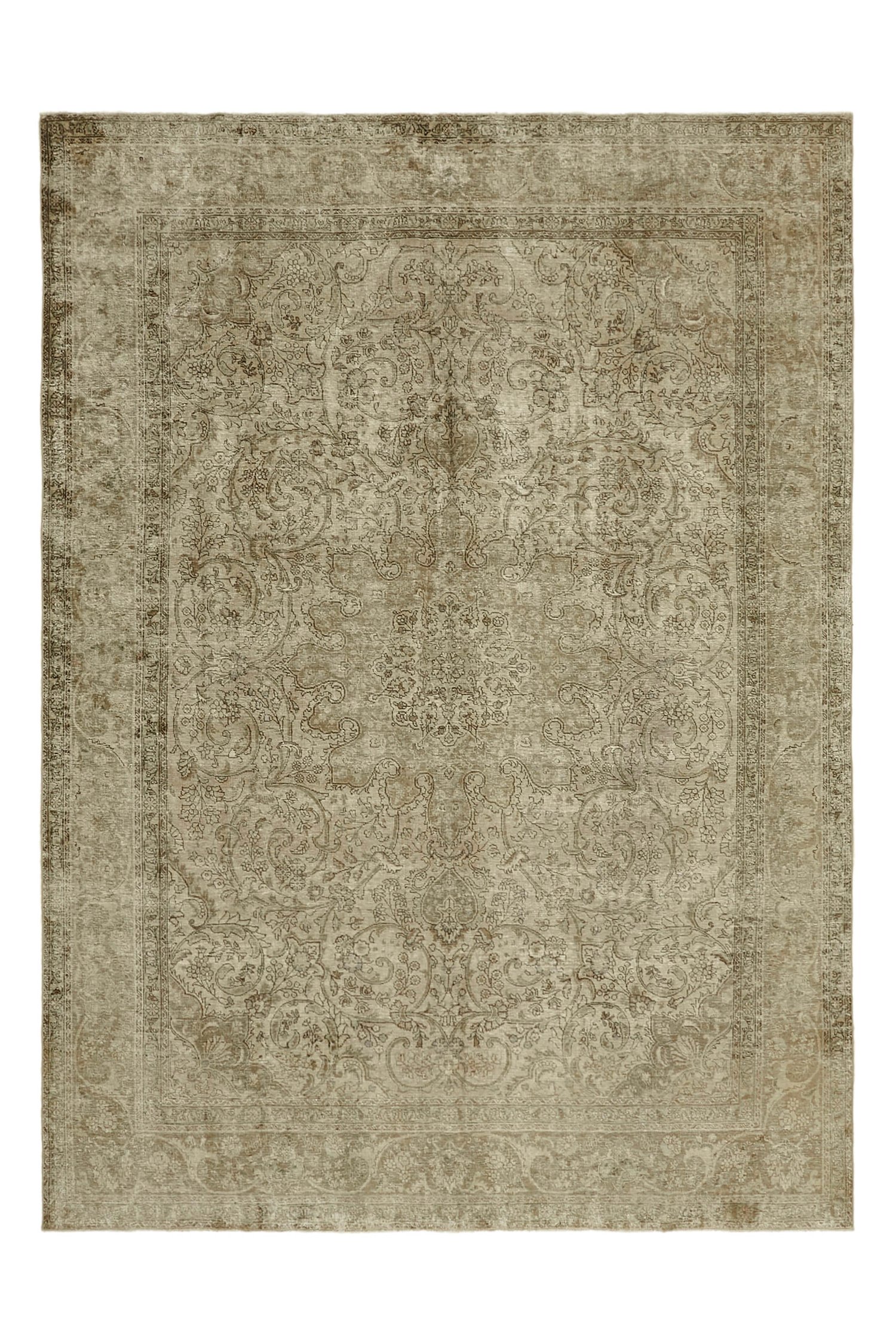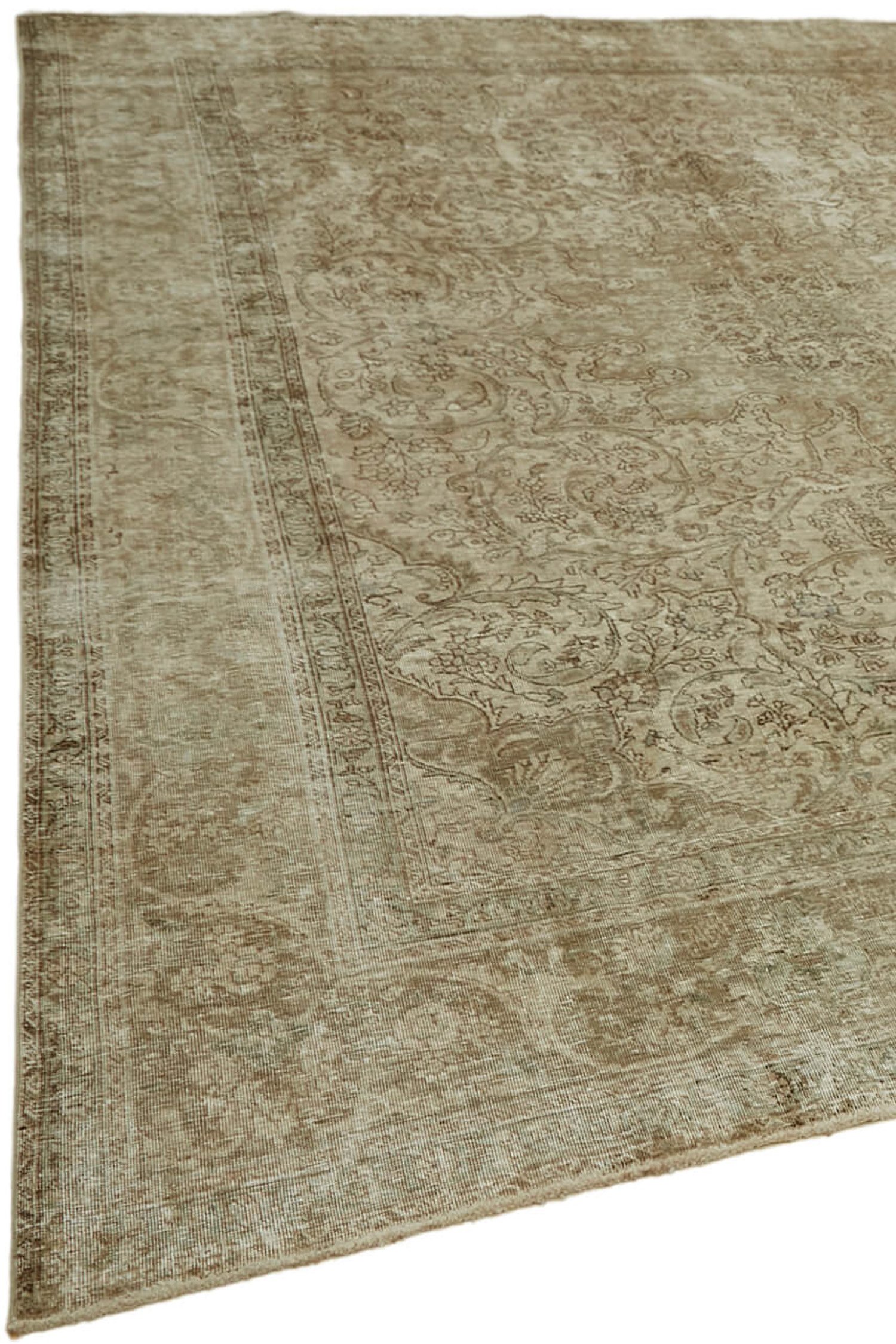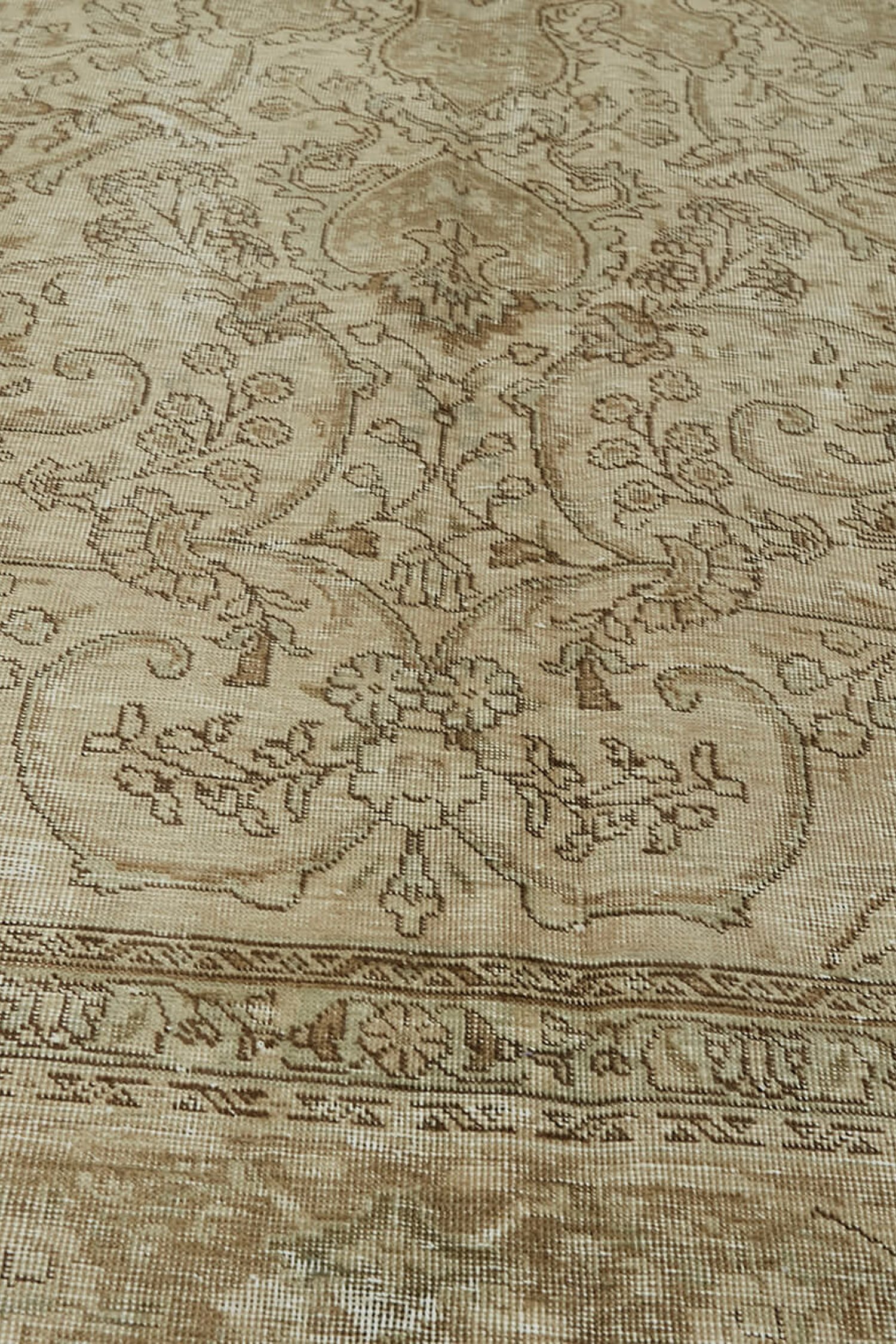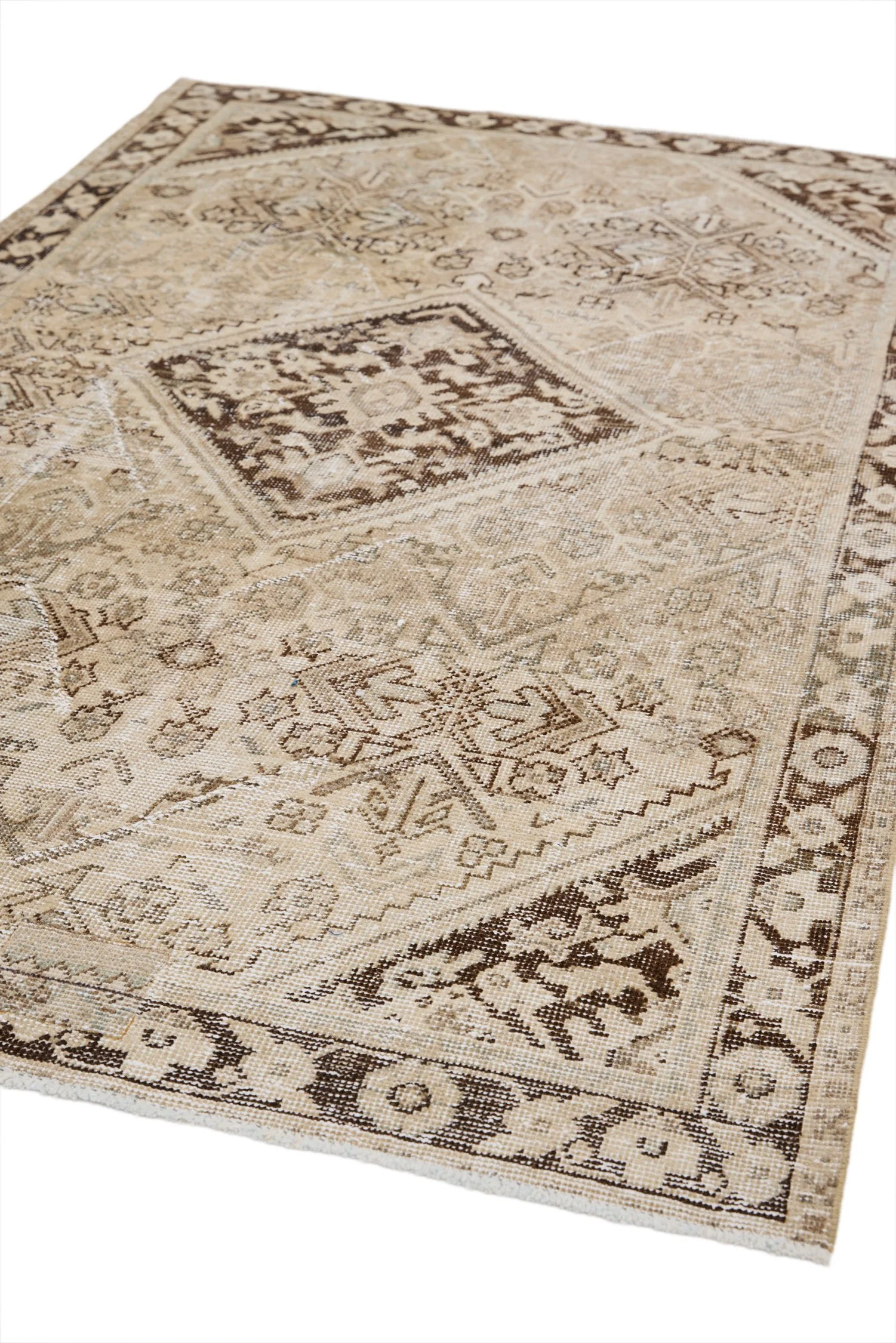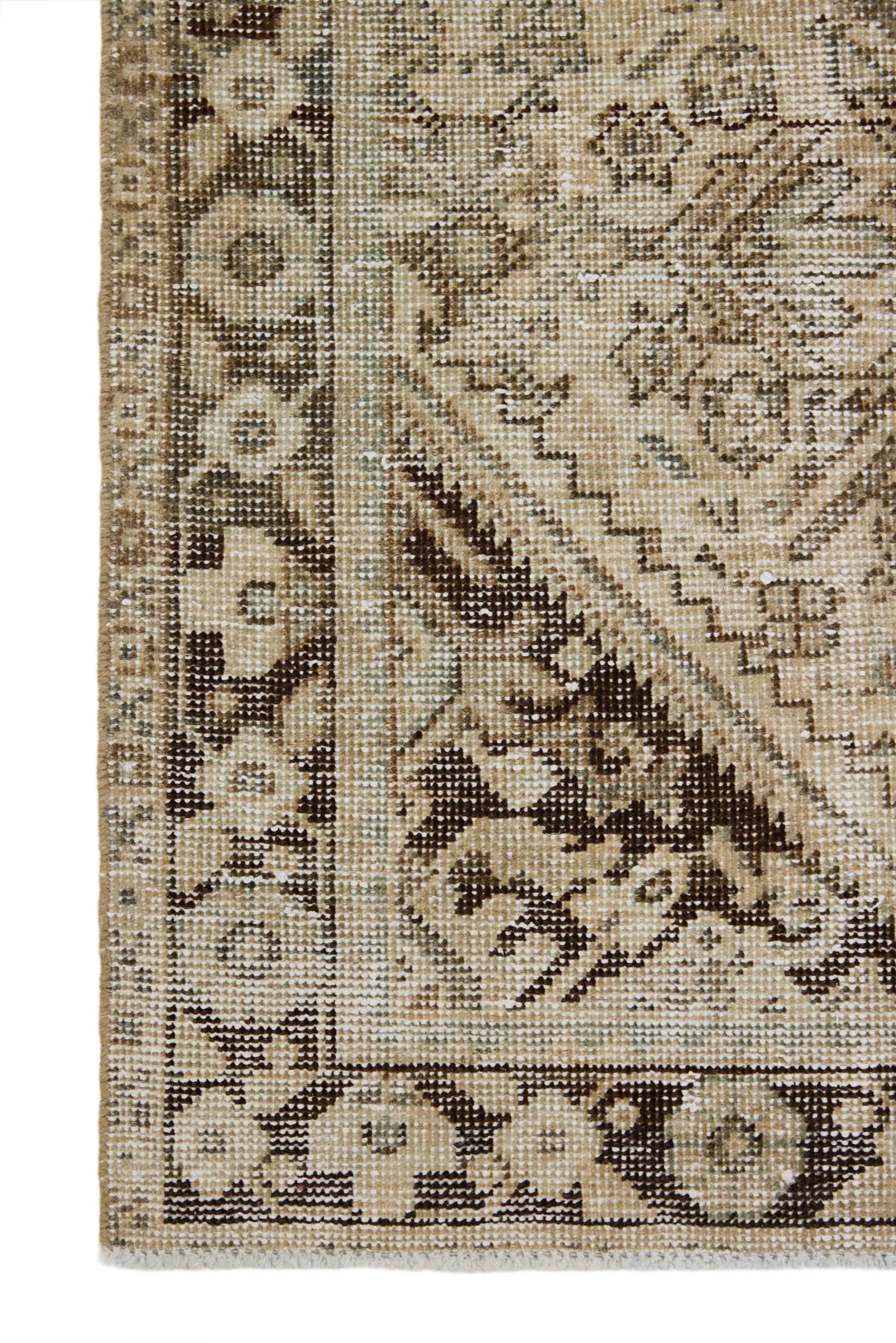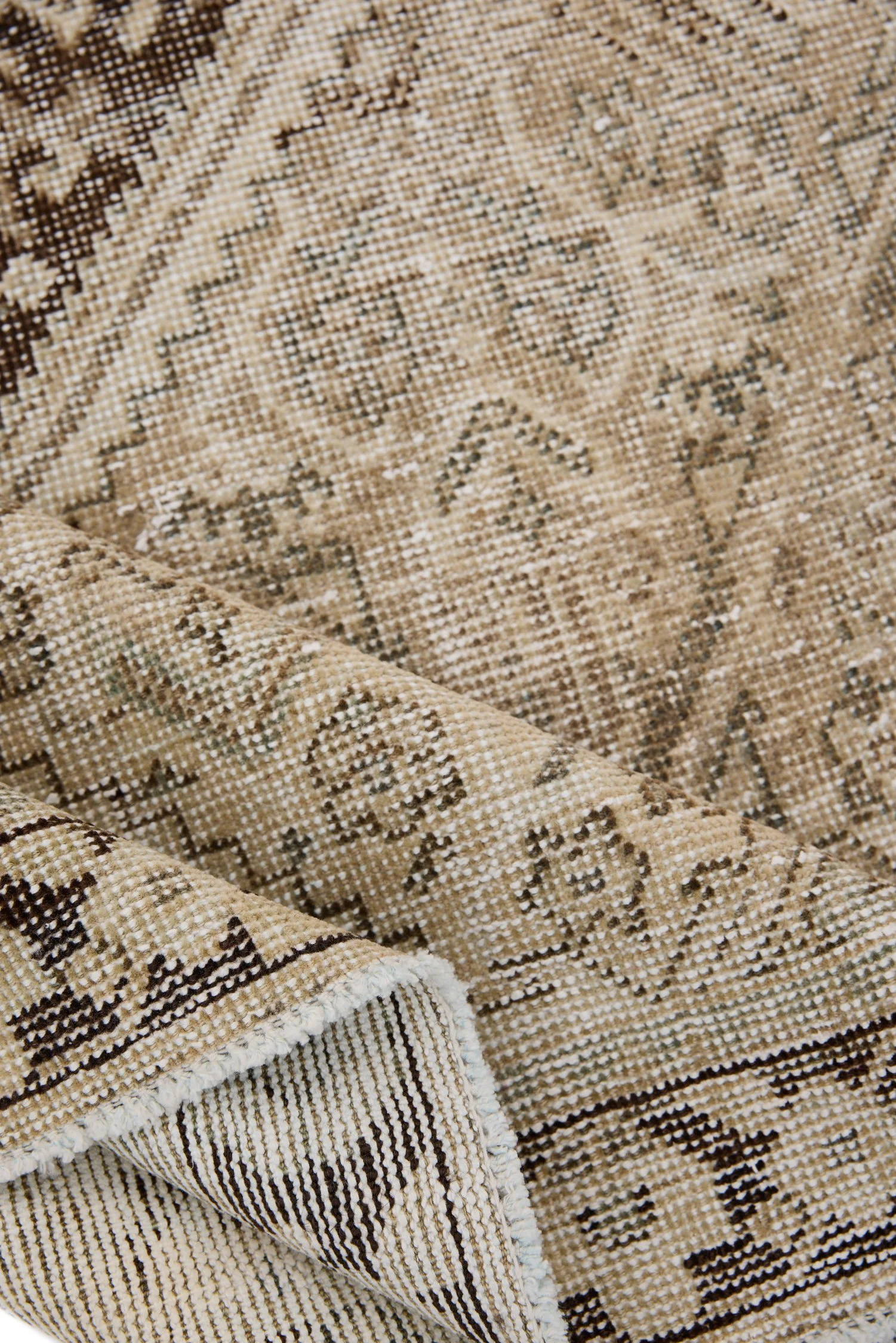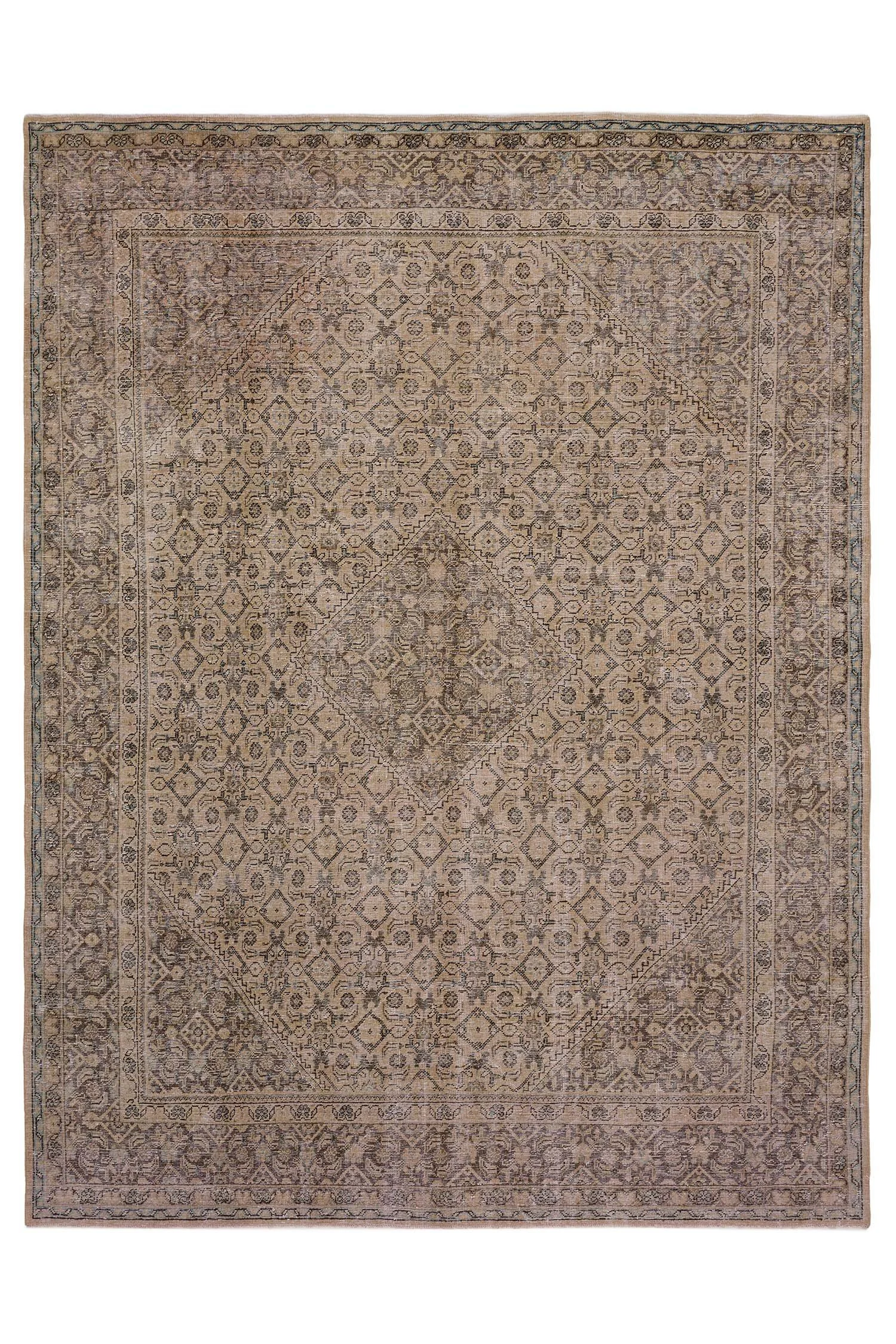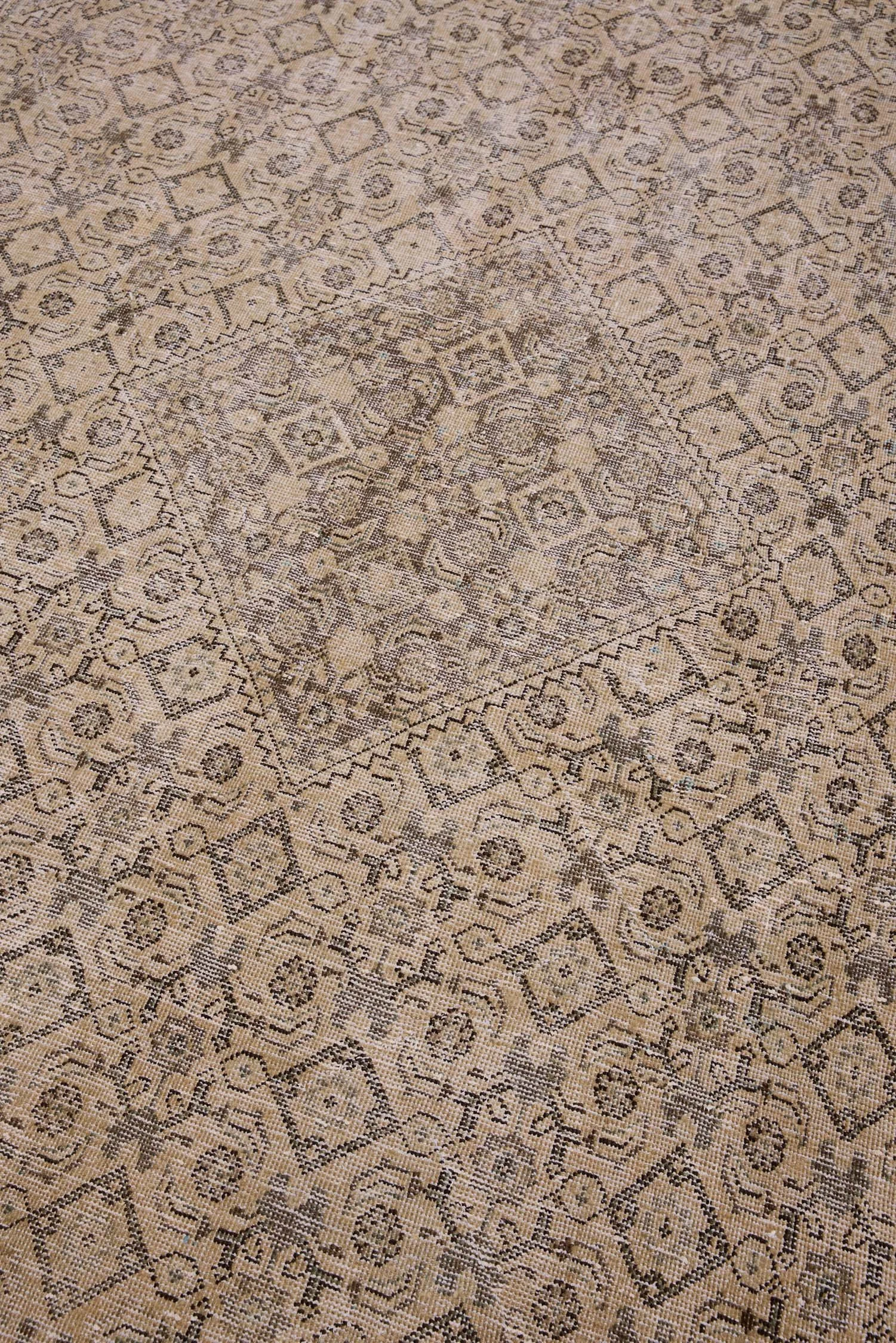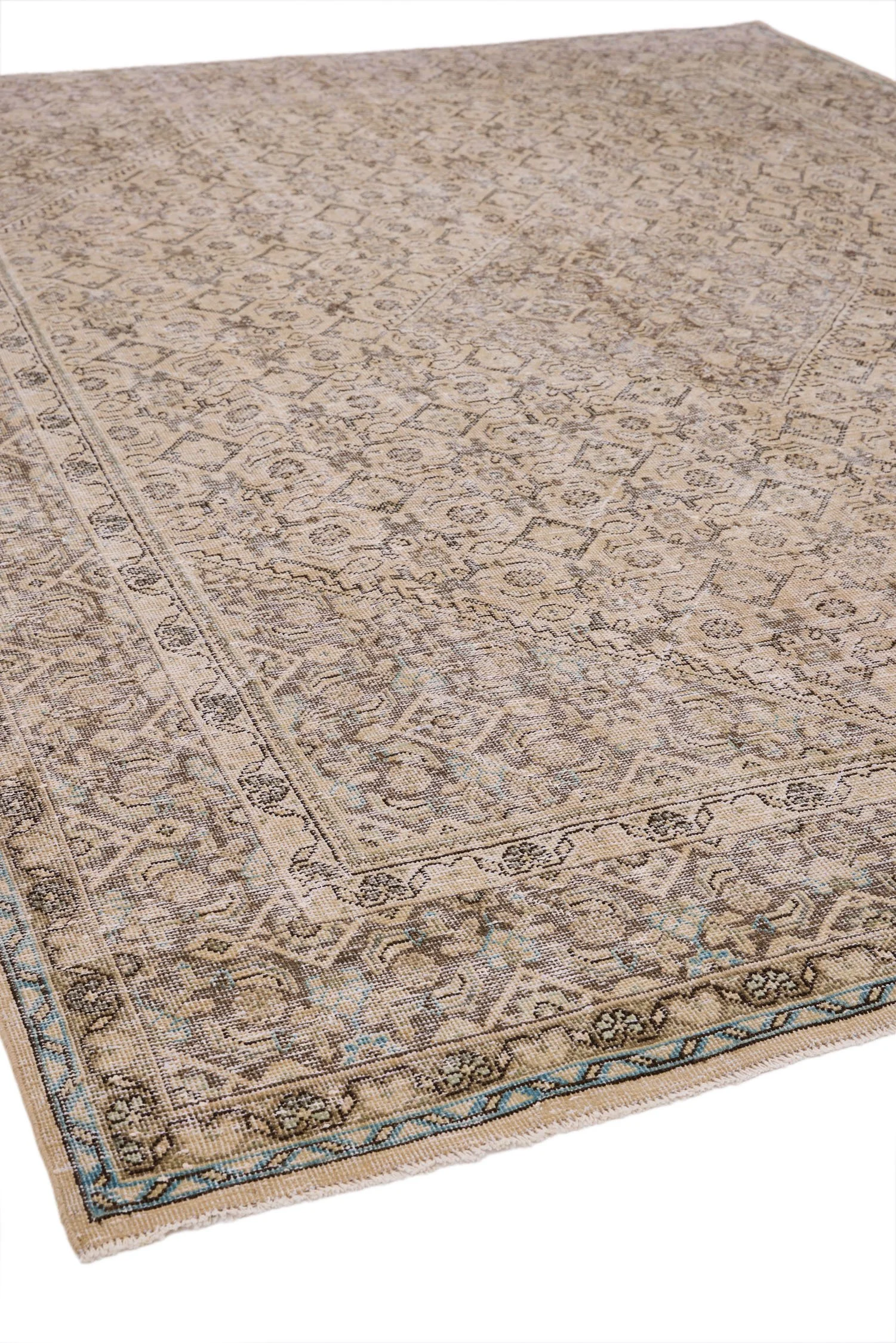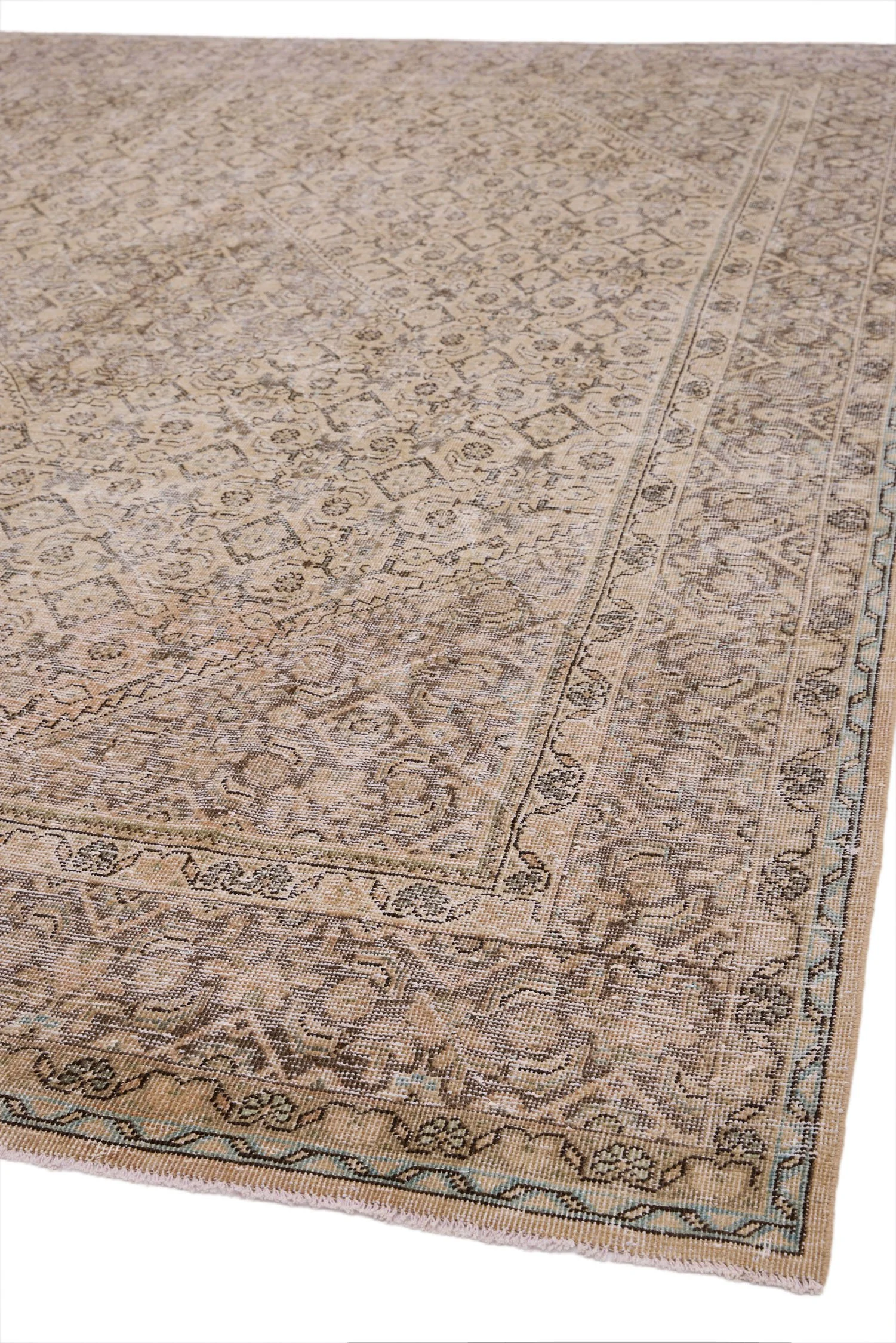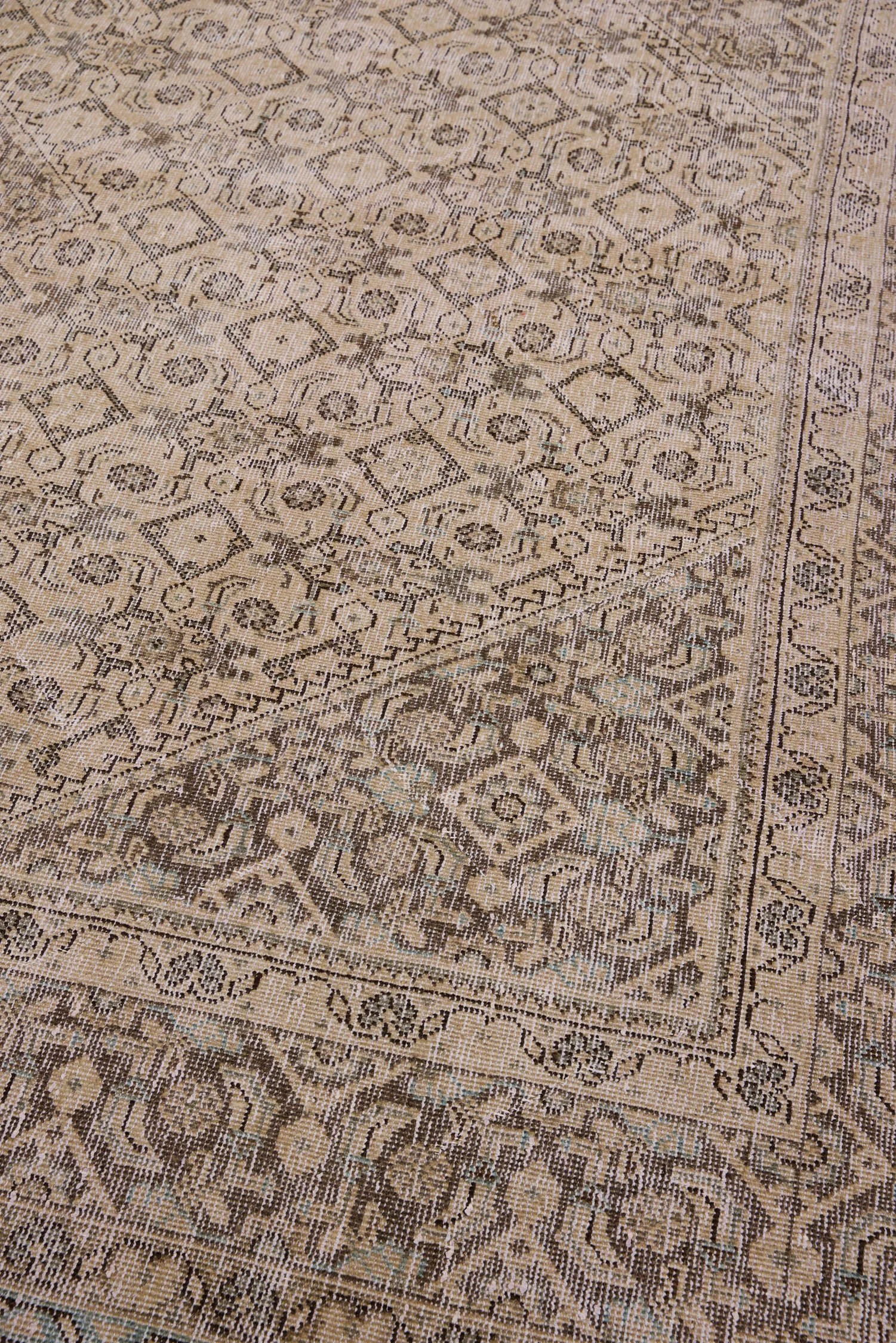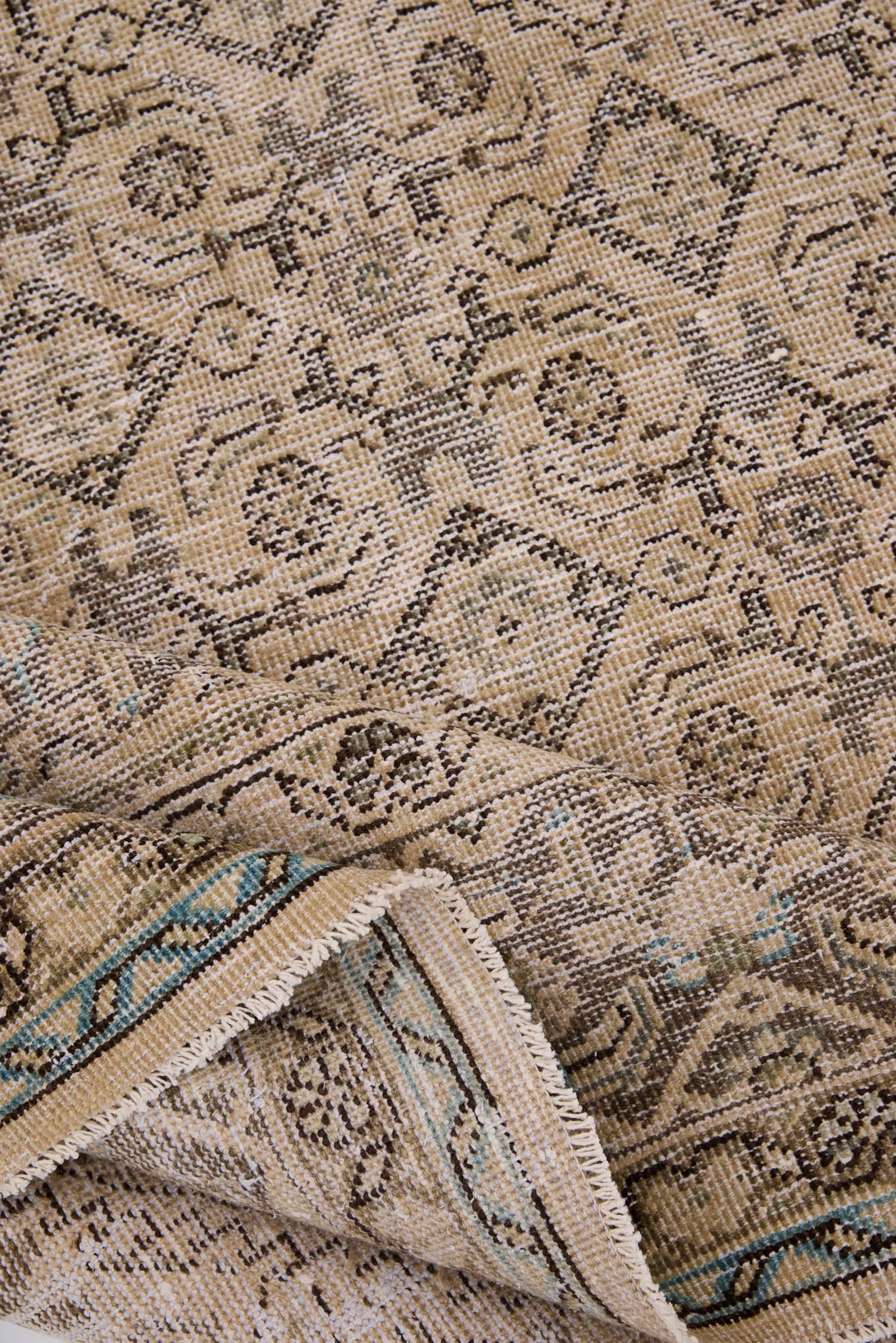Heritage and Craftsmanship
The village workshops of Heriz reached extraordinary heights during the 1940s, when local weavers had refined their techniques to achieve maximum visual impact through carefully controlled geometric relationships. This period produced rugs that demonstrated how traditional village patterns could achieve sophisticated urban appeal without losing their essential tribal character.
Design Elements
Dense patterning and angular vine motifs create strong visual rhythm across the field, where the commanding central medallion establishes focal authority while geometric spandrels provide balanced architectural support. The angular drawing characteristic of Heriz work maintains its structural clarity even as the natural patina softens the original color intensity. This combination of bold geometric framework with mellowed surface creates layers of visual interest that develop complexity through extended viewing.
Placement
The 7'7" x 10'5" dimensions work beautifully in living rooms, dining areas, or bedrooms where the substantial yet manageable scale can complement furniture arrangements without overwhelming the space. The deep brown and walnut palette with olive and slate blue accents creates a sophisticated foundation that enhances both traditional and contemporary interiors seeking authentic character.
Care Recommendations
To preserve the rug's beauty:
Rotate periodically for even wear
Vacuum regularly using a suction-only setting
Address spills immediately by blotting, never rubbing
Professional cleaning recommended annually
Avoid direct sunlight to maintain color integrity
Heriz rugs from this golden period represent the culmination of Persian weaving's village traditions, where generations of accumulated expertise produced pieces that balance commanding presence with intimate craftsmanship details. Their timeworn elegance continues to enhance modern homes with genuine cultural authenticity.




